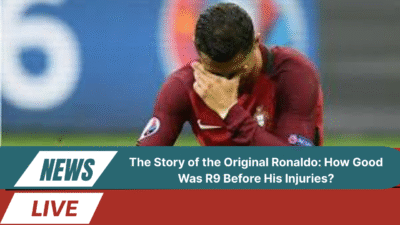How Does the Champions League Draw Work and why does it spark so much excitement among football fans every year? If you have ever watched the glamorous draw ceremony in Nyon, Switzerland, you probably wondered why certain clubs avoid each other, how the famous pots are created, and why rules like country protection exist. This isn’t just a random lottery—it is a carefully structured process designed to maintain balance, fairness, and suspense.
But what truly happens behind the scenes of this iconic event? Is it pure luck, or is there a science to how teams are separated into different groups and knockout ties? Understanding these details not only helps fans appreciate the beauty of the competition but also reveals how UEFA ensures that the Champions League remains the most prestigious club tournament in football.
In this guide, we will break down every detail: from how the pots are formed to the logic of seeding explained, from the role of country protection to the rules for knockout stages. We will also look at real-world examples of famous draws, unexpected matchups, and controversies that shaped European football history. Whether you are a casual fan or a devoted follower of every match, this article will serve as your completeto understanding the Champions League draw process.

Why the Champions League Draw Matters
The Champions League draw is more than a ceremony with balls and pots; it sets the stage for months of thrilling football. It defines which teams face an uphill battle early and which ones enjoy a seemingly smoother path. For clubs, broadcasters, and millions of fans worldwide, the draw is a moment of destiny.
For giants such as Real Madrid, a favorable draw can help sustain dominance.
For underdogs, being paired with Europe’s biggest names can be both a nightmare and a once-in-a-lifetime chance.
For historic rivalries, the draw can reignite battles such as the legendary El Clásico between Real Madrid and Barcelona, turning group stages into global spectacles.
The Basics of the UCL Draw Rules
Before diving deeper, let’s outline the most important UCL draw rules:
Teams are divided into pots based on seeding.
Clubs from the same country cannot meet in the group stage.
Political conflicts may prevent certain teams from being drawn together.
Knockout draws follow different rules, with group winners enjoying protection.
How the Pots Are Made
Pots are the backbone of the draw. Let’s see how they are determined:
Pot 1: Champions and Defenders
Domestic league winners of the top nations.
The Champions League and Europa League winners.
Pots 2, 3, and 4: UEFA Coefficients
Teams are placed based on their UEFA club coefficient, a ranking system that measures performance over five years.
This balance ensures that the group stage features both powerhouses and rising clubs, adding unpredictability.
Seeding Explained: More Than Just Numbers
Seeding is designed to avoid “groups of death” where too many elite clubs clash early. By spreading strong teams across different pots, UEFA ensures fairness.
For example, La Liga title races strongly influence pot allocation, since Spain’s champions automatically join Pot 1, while other clubs rely on their UEFA coefficients.
Country Protection Rule
This rule prevents clubs from the same country from being drawn into the same group. It helps maintain variety and guarantees that group-stage matches remain internationally diverse.
This is especially crucial in leagues dominated by multiple clubs, like Spain or England, where three or four representatives often qualify.
Draw Mechanics: Step-by-Step
Group Stage Draw
Teams are divided into 8 groups (A–H).
One team from each pot is assigned to a group.
Country protection ensures separation.
Knockout Stage Draw
Group winners face runners-up (not from the same group or country).
From quarter-finals onward, no restrictions apply.
Controversies and Memorable Draws
The draw has produced unforgettable moments of debate and excitement:
Instances where errors forced UEFA to order a redraw.
Complaints of “easy paths” for certain clubs.
Memorable clashes like Barcelona vs Chelsea meeting repeatedly in the 2000s.
Comparison Table: Group Stage vs Knockout Draw
| Feature | Group Stage Draw | Knockout Stage Draw |
|---|---|---|
| Pots | Based on champions and coefficients | Based on group winners vs runners-up |
| Country Protection | Yes | Only in Round of 16 |
| Political Restrictions | Yes | Sometimes |
| Randomness vs Strategy | Controlled randomness | More open, but seeded initially |
Case Study: Real Madrid’s Journey
A real-world case shows how the draw shapes destiny.
In 2021, Real Madrid faced a difficult path after being placed in Pot 2. The sequence of matchups created one of the toughest roads, yet the club still advanced, proving that seeding and pots significantly influence campaigns.
The Glamour and Showbiz Side
The draw ceremony has become entertainment in itself. With football legends presenting the draws and millions watching live, it has turned into a global media event.
This resembles debates over the importance of trophies such as the Community Shield, where the spectacle sometimes outweighs the competitive value.
Beyond the Rules: Psychological Impact
For managers and players, the draw isn’t just administrative—it impacts preparation and mindset. Knowing whether they face a straightforward or challenging path changes strategy, training, and even transfer planning.
Just as footballers often cover their mouths when talking to protect their intentions, secrecy and anticipation play a role in how clubs approach the Champions League draw.
Future of the Draw
UEFA is planning a new format starting from the 2024–25 season, which will expand the group stage into a league-style table. This might reduce the traditional use of pots but will preserve the essence of suspense and fairness.
FAQs: Champions League Draw Explained
Q1: How Does the Champions League Draw Work in the group stage?
Teams are divided into four pots, and each group contains one team from each pot, with country protection applied.
Q2: Why are some teams automatically in Pot 1?
League champions of top nations and the winners of the Champions League and Europa League go straight into Pot 1.
Q3: What is country protection?
It is a rule preventing teams from the same nation from being drawn into the same group.
Q4: Can two clubs from politically sensitive nations face each other?
No, UEFA avoids such matchups to prevent conflicts.
Q5: Will the draw system change in the future?
Yes, starting in 2024–25 UEFA will adopt a league format instead of the traditional group stage.

Conclusion
The Champions League draw is a carefully structured process that blends fairness with drama. From seeding explained to the famous country protection rule, every detail shapes Europe’s most prestigious competition. While luck always plays a role, the system ensures balance, unpredictability, and excitement—making every draw ceremony a moment of destiny for clubs and fans alike










